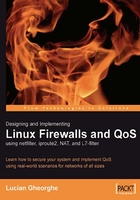
OSI versus TCP/IP
As it was mentioned before, the OSI model is more of a theoretical model and it is very useful in the learning process. On the other hand, the Internet was built on the TCP/IP model, and so, TCP/IP is the most popular due to its usage and its protocols.

Some similarities between the two models are:
- Both models are layered models and have the benefits of layered communication models.
- Both models have application layers, even if they include different services.
- Both models have transport and network layers that have comparable functionality.
- Both models use packet-switching technologies instead of circuit-switching.
Some differences between the two models are:
- TCP/IP combines the three upper layers of the OSI model in a single layer, thus being more oriented towards the transmission protocols.
- The data link and physical layers from the OSI model are combined in a single layer in the TCP/IP model.
Nowadays, the OSI model doesn't have live applications as TCP/IP does, but it is the starting point of every networking model because of its benefits.
TCP/IP looks simpler because it has fewer layers than the OSI model. However, communication using TCP/IP matches all the layers in the OSI model.
Let's see an example in a TCP/IP network:

A packet originating from host X will get to host Y by traversing routers A, B, and C.
Let's say, for example, that host X is a web server replying to a request originally initiated from host Y.
The HTTPD server (X Layer 7) responds to the request by sending a HTML-formatted page (X Layer 6) to host Y. The server has many requests that it answers at that moment; so the operating system will send the data (the web page) on a session initiated when host Y made the request (X Layer 5). The data is then encapsulated in a TCP segment (X Layer 4). The TCP segment is then encapsulated in an IP packet with the source IP of host X and destination IP of host Y (X Layer 3). Host X looks for host Y in its routing table and doesn't find it; so host X should forward the IP packet to router A, which has an interface on the same subnet with the IP address of an Ethernet card on host X. The IP packet is sent to the Ethernet interface and converted to Ethernet frames (X Layer 2), which are then converted to electric currents and sent through the RJ45 socket of the Ethernet card (X Layer 1).
Router A receives some currents on the cable entering one of its Ethernet interfaces (A Layer 1) and converts these currents to Ethernet frames (A Layer 2). Ethernet frames are then converted to IP packets. The router looks at the destination IP address in the IP packet, and sees that it matches none of its IP addresses; so it knows that it should find a path to host Y. Looking at its routing table, it finds that the best path is advertised by router B and decides to send the IP packet to it (A Layer 3). If router A is connected to router B through a modem, it will convert the IP packet into PPP frames (A Layer 2), and the modem will convert the PPP frames into sounds (A Layer 1).
Routers B and C will do the same thing as router A, except that router C will find host Y directly connected to one of its interfaces (Y has an IP address in the same subnet as one if C's IP addresses), and so it will send the packet directly to Y.
Host Y receives some currents on the cable connected to its Ethernet interface (Y Layer 1), which it will convert to Ethernet frames (Y Layer 2) and then to IP packets (Y Layer 3). It will then look for the destination host in the IP packet that matches one of its IP addresses. The contents of the IP packet are then taken by the TCP protocol (Y Layer 4), which puts the received segments together. The operating system of host Y will handle the data received from TCP to send it on the session that requested this data (Y Layer 5). For example, if host Y has three web browsers opened, the operating system will give the data from TCP to the browser that requested it. The data received is HTML formatted (Y Layer 6); so it will be read by the web browser using the HTML standard. Finally, after all data is received, the web browser will display to the user the web page received (Y Layer 7).